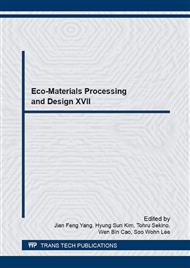p.1
p.6
p.12
p.18
p.23
p.28
p.33
p.38
Effect of Reinforcement on the Tribological Behavior of CuFe-Based Composites
Abstract:
Two types of CuFe matrix composites with different reinforcements: silica and alumina particulates were developed using powder metallurgy. The mechanical properties were determined from Brinell hardness and flexural strength. The dry sliding friction and wear performance of the composites were investigated by the friction test. The results indicated that mechanical properties of alumina were superior to those of silica. The friction tests of the composites showed that the alumina reinforcement particle provides better braking performance. A wear track examination of composites showed that same abrasive wear. Our results indicated that composites with alumina reinforcement particles of high compatibility are to be preferred for braking performance.
Info:
Periodical:
Pages:
18-22
Citation:
Online since:
August 2016
Authors:
Keywords:
Price:
Сopyright:
© 2016 Trans Tech Publications Ltd. All Rights Reserved
Share:
Citation:


